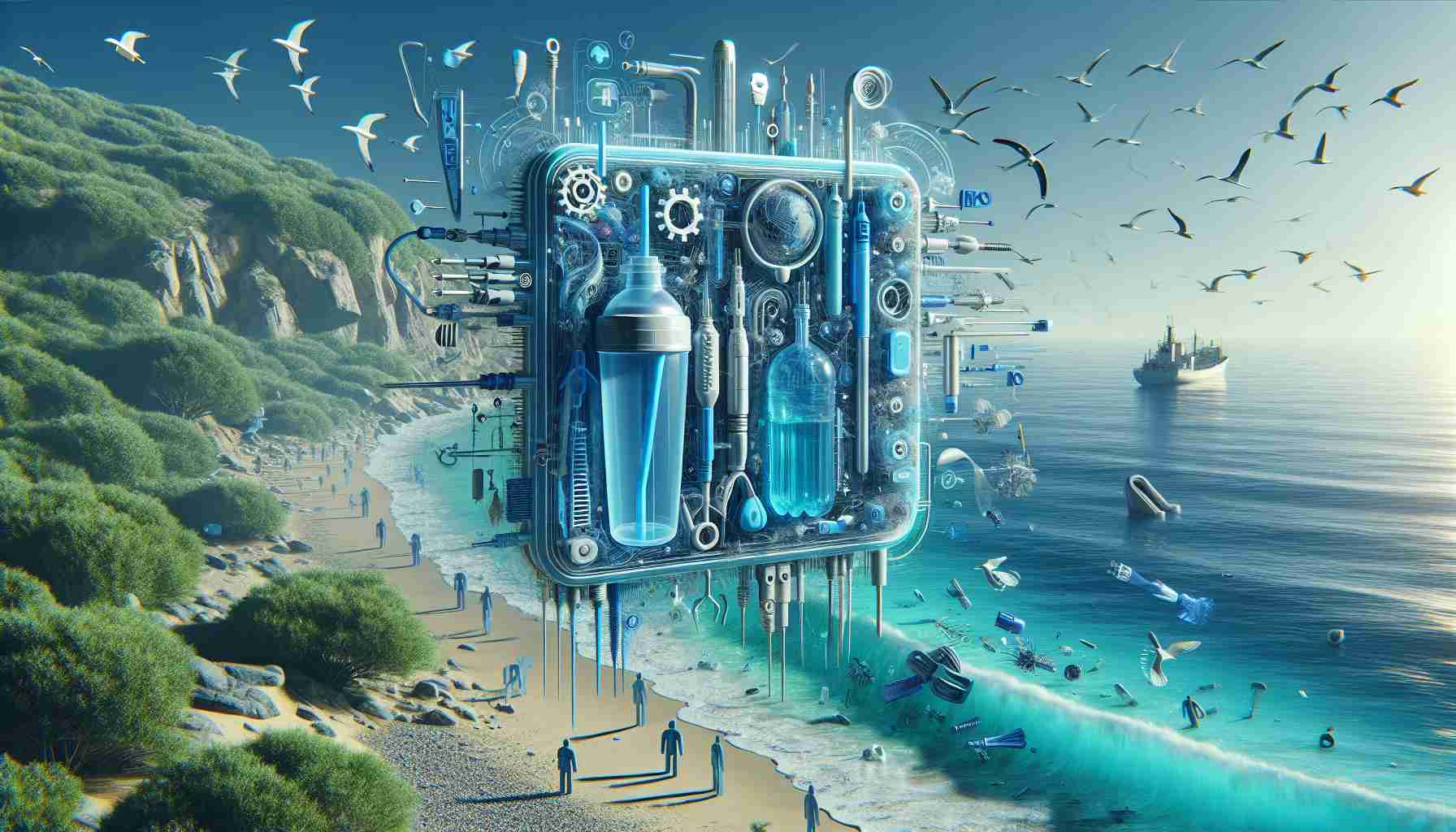
Groundbreaking research from RMIT University has led to the creation of an innovative satellite tool designed to detect plastic waste on beaches. By analyzing the unique light reflection patterns of sand, water, and plastics, this technology can identify plastic debris from altitudes exceeding 600 kilometers. Although satellite systems have historically monitored oceanic plastic pollution, they have faced challenges in beach environments where plastics often blend with natural elements.
The study’s findings, published in the Marine Pollution Bulletin, present a significant breakthrough in targeted cleanup initiatives. Every year, oceans are burdened with over 10 million tons of plastic waste, and projections suggest this volume may soar to 60 million by 2030. The lead researcher highlighted the dire consequences plastics pose to wildlife, noting that marine animals often mistake plastic for food, leading to serious ecological ramifications.
Utilizing a mathematical formula called the Beached Plastic Debris Index (BPDI), researchers engineered this tool to enhance plastic detection on coastlines. During trial runs, the BPDI proved to be more effective than previous methods, successfully distinguishing plastic from other materials like water and sand.
Looking forward, researchers aim to apply this technology in real-world scenarios. Collaborations with environmental organizations are anticipated to further efforts in preserving coastal ecosystems from plastic pollution, thus contributing to global sustainability objectives.
Revolutionary Satellite Technology to Address Beach Pollution from Plastics
As the issue of plastic pollution continues to escalate, innovative solutions are crucial in the fight against environmental degradation. In a groundbreaking development, researchers at RMIT University have introduced a new satellite tool specifically designed to combat plastic pollution on beaches. This state-of-the-art technology represents a leap forward in environmental monitoring and intervention.
Why is Plastic Pollution on Beaches a Critical Issue?
Plastic waste on beaches not only tarnishes natural beauty but also poses significant threats to marine ecosystems. A plethora of marine wildlife, such as turtles and seabirds, can ingest plastic debris, mistaking it for food, resulting in severe health complications or even death. Additionally, plastics can break down into microplastics, which persist in the environment and enter the food chain.
Key Benefits of the Satellite Tool
1. Enhanced Detection Capabilities: The satellite technology utilizes the unique light reflection patterns of sand, water, and plastics to identify pollution from over 600 kilometers above the earth. This ability to differentiate plastic waste from natural coastal elements is unprecedented.
2. Accurate Monitoring: By leveraging the Beached Plastic Debris Index (BPDI), the tool provides a quantitative measure of plastic concentration, aiding in effective cleanup efforts.
3. Scalable Solutions: The technology can be easily scaled and integrated with other environmental monitoring systems, making it a versatile asset for various coastal regions worldwide.
Challenges and Controversies
Despite the significant advantages, there are challenges that accompany the implementation of this technology:
– Cost of Implementation: The initial investment for deploying and managing satellite technology may be high, potentially limiting adoption in resource-constrained regions.
– Data Reliability: While the BPDI is a promising development, its accuracy across diverse ecosystems and varying conditions is yet to be fully validated.
– Equitable Access: There’s a concern that richer nations may benefit more from such technological advancements, leaving developing nations vulnerable to the impacts of marine pollution without adequate resources for cleanup initiatives.
Advantages and Disadvantages of the Technology
Advantages:
– Significant Environmental Impact: This technology can play a vital role in reducing beach plastic waste, contributing to healthier marine ecosystems.
– Informed Decision-Making: Policymakers and environmental organizations can make data-driven decisions regarding cleanup strategies and resource allocation.
Disadvantages:
– Limited Immediate Action: Detection does not equate to cleanup; additional strategies must be in place to manage and remove detected waste effectively.
– Dependence on Technology: Relying heavily on technology might lead to neglect of traditional methods of pollution monitoring and community engagement.
Future Outlook
As researchers work towards real-world applications of this satellite tool, collaborations with environmental groups and governmental agencies are essential to maximize its impact on global sustainability efforts. Engaging local communities in monitoring and cleanup initiatives will complement technological advancements and foster a culture of conservation.
In summary, while this innovative satellite tool represents a significant advance in combating beach pollution from plastics, it must be implemented thoughtfully, balancing technological solutions with on-the-ground action.
For further information related to environmental sustainability and technological innovations, visit UN Environment and World Wildlife Fund.



